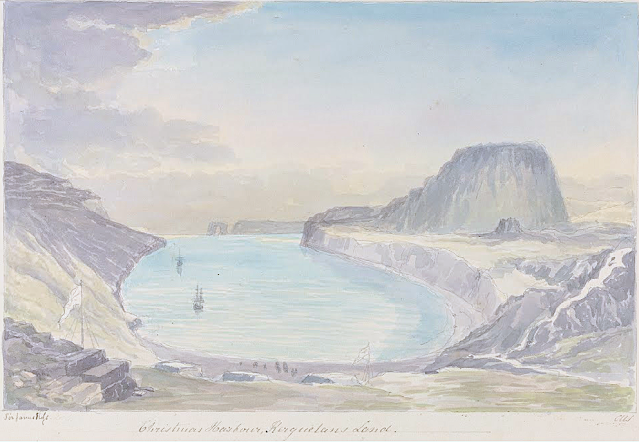
Petoowack Arctic Highlands Formation (500 m)
Antarctica
In Petoowack Arctic Highlands Formation, watercolor, Yale Center for British Art
L'artiste
Le lieutenant-colonel Charles Hamilton Smith, était un artiste anglais, naturaliste, antiquaire, illustrateur, soldat, et... aussi espion ! Sa carrière militaire débute en 1787, lorsqu'il étudie à l'académie d'artillerie et de génie à Malines et Louvain en Belgique (son pays natal). Son service militaire, qui s'est terminé en 1820 et comprenait les guerres napoléoniennes, l'a vu beaucoup voyager (y compris les Antilles, le Canada, les États-Unis, l'Europe du Sud et du Nord et ... l'Antarctique).
Illustrateur autodidacte prolifique (plus de 38 000 dessins !), il a laissé un nombre assez important de livres de paysages magnifiquement aquarellés pris dans le monde entier. ces recoins d'aquarelles sont aujourd'hui dans les collections du Yale Center From British Art. Parmi eux :
- Vues de France, tome I (81 aquarelles), Vues de France, tome II (93 aquarelles),
- Vues d'Angleterre et du Pays de Galles, Tome I (82 aquarelles), Vues d'Angleterre et du Pays de Galles, Tome II (74 aquarelles),
- Vues d'Europe du Nord, Tome I (68 aquarelles), Vues d'Europe du Nord, Tome II (78 aquarelles),
- Vues des régions polaires (75 aquarelles) (voir ci-dessus)
- Vues d'Espagne, Volume I (69 aquarelles), Vues d'Espagne, Volume II (72 aquarelles), Mais l'une de ses réalisations remarquables fut une expérience de 1800 pour déterminer quelle couleur devait être utilisée pour les uniformes militaires. Il est également connu dans les cercles d'histoire militaire pour le costume de l'armée de l'Empire britannique, produit vers la fin des guerres napoléoniennes et une représentation précise de l'uniforme britannique contemporain.
En tant qu'antiquaire, il a également produit, en collaboration avec Samuel Rush Meyrick, Costume of the Original Inhabitants of the British Islands, 1815, et The Ancient Costume of England, avec des illustrations historiques de chevaliers médiévaux, de dames, de navires et de batailles.
Il a également écrit sur l'histoire de la guerre de Sept Ans et sur l'histoire naturelle des chiens.
Un type plutôt productif !
_________________________________________
2023 - Wandering Vertexes ....
Errant au-dessus des Sommets Silencieux...
Un blog de Francis Rousseau











